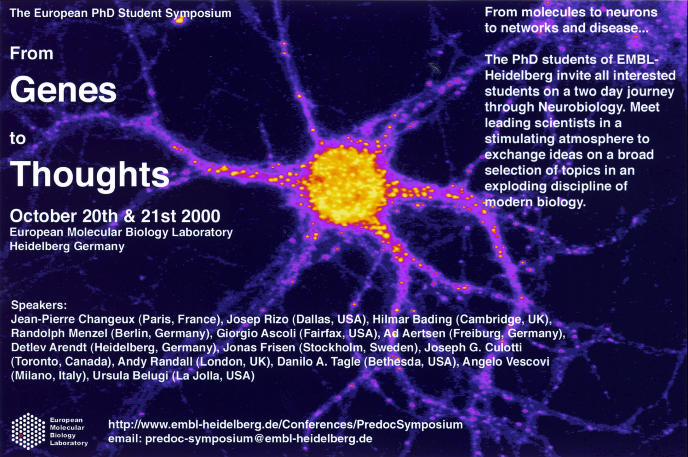In the minds of many people and the public press, the term ‘stem cells’ has become a magic password for entering a medical utopia where physicians will be able to overcome all human ailments once and for all. The hope for this ‘brave new world’ comes from tiny cells that are still undifferentiated but have the potential to become a variety of different cells. By directing their growth and development, biologists could potentially use them to grow therapeutic ‘spare parts’ to treat diabetes or Parkinson’s disease or to heal paralysed persons—just to name a few uses of this technology. In the most extreme vision of this future, even aging and death could finally be defeated as failing organs would be replaced by new ones freshly grown from stem cells. Although these goals are not yet within reach, they have already triggered intense medical research and have drawn interest from the public and the bio-pharmaceutical industry.
But the glossy promises of stem cell research are overshadowed by serious ethical questions that result from the origin of these cells. Pluripotent stem cells cannot yet be generated from cell lines. They have to be taken from a human embryo at an early stage of development. At the moment, the most important sources are aborted or spare embryos left over from in vitro fertilization. It is this method of stem cell generation that has drawn most of the criticism. Medical treatments using stem cells are not yet available, so the actual dilemma is not their application but rather the direction that research should take since it needs these cells and consumes their source now. If we want to pursue medical research using embryonic stem cells, we have to face the problems that the extraction of these cells from a human embryo brings with it.
The debate about the ethics of stem cell research has reached an international level, and has spurred on widespread concern about biomedical research in general. The failure of society to address and resolve these questions is reflected in the differences of interim regulations that have been adopted in various countries. In the USA, research that uses embryos cannot be financed with public funding. In the UK, research on embryos is currently limited to in vitro fertilization and pre-implantation diagnosis. Belgium has not yet adopted any regulations for the generation and use of stem cells. The Council of Europe has not decided on guidelines either: the supplementary protocol to the Convention on Biomedicine on the protection of the embryo has not yet been written. Things are happening, but the outcome of the ethical debate is still open.
Let us start the discussion about ethical concerns with the problems that arise from the physical removal of stem cells from a blastula. The first question is whether these cells themselves should be considered embryos because they are totipotent and can become ‘anything’. Or should they be considered just as cells because they are still capable of a number of developments but not of developing into a fetus if they are implanted in a womb? If we agree that these cells have lost the ability to become a human being, then we can exclude them from the discussion about the protection of the embryo. And what about the embryos that are used for experiments? Can the removal of stem cells damage an embryo? Where experiments on embryos have been permitted and pursued, non-implantation has been seen as the logical decision, indeed as the ethical imperative because of the possibility that they might have been damaged during the removal of stem cells. The final answer to these questions cannot be decided by the ethicist alone but rather through discussion with scientists.
The most important point, and the one that lies at the heart of the ethical controversy about stem cells, is the question of what morally relevant status a human embryo possesses. Can we simply treat embryos as a biological resource that can be generated in vitro and exploited to produce stem cells, just because they are the most important source of this valuable commodity? Until now, fertilization in the test tube has been used to help childless couples have children, and not to create embryos for the purpose of research. But it must be clear that removal of stem cells after so-called ‘therapeutic cloning’ that is undertaken solely for research purposes opens the door to a liberalization of laws regulating in vitro fertilization. We, as a society, will have to consider and discuss the social and ethical questions that arise with this kind of research.
So, what is a fertilized egg, what is an early embryo? The Convention on Biomedicine offers three possible answers that are mentioned in the supplementary protocol on human cloning: an embryo is a person, a human being, or a conglomerate of human cells. I suggest that the last possibility be excluded, because there is indeed a significant difference between human gametes and an early embryo. The embryo has a gender. It has the ability—and not merely in the sense of an abstract potential—to become a human being if its development is allowed to follow its natural course. The common objection that ‘nature’ does not implant all fertilized egg cells does not count in this context because ‘nature’ cannot be treated as a morally responsible subject. Anyone who is not prepared to accept the cruelty of ‘nature’ as an ethically restrictive argument should not use it as a normative argument for indifference either.
If we are dealing with an embryo as a human being, we must consider giving it a status that is morally relevant. If we do so, can we maintain that every embryo is the bearer of individual rights that would preclude its destruction or even its being put at risk? My point of view is that simply belonging to the human species already entails a particular right to protection, which transcends that applied to animals. Those who do not want to protect embryos individually, but would rather protect them only as a particular kind of ‘biological material’ that has to be treated with respect but could be used for research therefore violate, in my opinion, the morally relevant status of a human being.
But is the problem not larger than this? The Catholic church assumes that an embryo has to be treated ‘like a person’. This formulation is carefully worded in the sense that it does not simply maintain that embryos are identical with persons. The church argues that we cannot make a distinction between ‘human beings’ and ‘persons’ and assign them to two different levels because the development of a human being is a unified and continuous process. It can be discerned but it cannot be broken into different phases. Indeed, it would have unpredictable consequences for the human society if we began to distinguish between human beings on the basis of the stage of their development. The consequence of the inseparability of a human being from its development is a morally relevant status for the embryo that grants it full protection. This means that it may not be used for research, which treats it as raw material. If this status is respected, then the embryo’s life can only be weighed against the saving of another life.
In the absence of statements of revelations in this area, this theological position as well as the position of the other side can only be argued philosophically. But this sensitive debate is often carried out polemically; the one side believing that it must object on philosophical grounds to a constitutional position that demands protection of the embryo, the other side speaking of ‘the violation of the constitution’ as soon as anyone starts arguing philosophically. It seems to me, however, that much more important than these rejections of either form of argumentation is the attempt to excuse research on human embryos by referring to the ailments and sufferings of patients.
There is a tendency among the supporters of research, which uses embryos as raw material, to give highest priority to medical options and potential therapeutic benefits. But research uses embryos now and irrecoverably. The interests of sufferers from an illness are important, but they must not be given priority in a society that must be committed to all moral values. The social solidarity with the sick and the sufferers, which assigns valuable resources to biomedical research, also must set priorities for the ethical use of these resources.

Stem cell dilemmas
The various debates about ethical problems that go along with human stem cell research have led to a patchwork of regulations and restrictions in Europe. In addition to pan-European laws regulating stem cell research, individual countries have also adopted their own legislations. The result is a muddle that ranges from strict restrictions in Germany to virtually no regulation in Belgium.
The USA, in contrast, have created a dilemma of their own. Republican members of Congress introduced a clause that bars federal money for any research in which an embryo is destroyed. Since its attachment to the bill settling the National Institutes of Health’s budget in 1996, this clause has hampered stem cell research at virtually all American universities and NIH institutions. Privately funded companies like Geron or Advanced Cell Technology however remain exempt, because a wide-ranging legislation, which included the private sector, would not find support in Congress.
‘There is a very strong anti-abortion movement in the US, which sees the generation of stem cells as destroying an embryo. So if you take that stance it’s very hard to discuss beyond that line,’ Carl Gulbrandsen, Director of the Wisconsin Alumni Research Foundation, explains this particular situation. To overcome the legal bottleneck and to diminish the dependence on private companies, the foundation announced earlier this year the establishment of WiCell Research Inc., a non-profit institution that will generate and distribute stem cells to public and private research facilities.
Though legal under federal law, the creation of WiCell still ran into local problems. ‘Here in Wisconsin we had a contest with the pro-life movement that would have effectively shut down the distribution,’ says Gulbrandsen. ‘That legislation failed, but with a very slim margin.’ Nevertheless, he ultimately expects Congress to lift the ban on generating stem cells as medical and economic advantages become clearer—however, later rather than sooner. ‘My expectation is that it is not going to happen in an election year,’ he says.
In Europe, the view on stem cells is less influenced by abortion but by possible abuse of this technology. ‘I think in Europe we see the use and generation as one thing and will regulate it accordingly,’ Anders Björklund from Lund University expects. It would mean that researchers will be able to take stem cells from in vitro fertilized embryos, but face clear limits on the utilization of the cells like the use for reproductive purposes. Björklund sees a positive attitude growing among scientists and policy makers towards a European regulation of stem cell research in the public as well as the private sector. ‘There is no reason to believe that the commercial sector will have the upper hand,’ he says, referring to the American situation, ‘...that will not be good for scientific purposes.’
Holger Breithaupt



